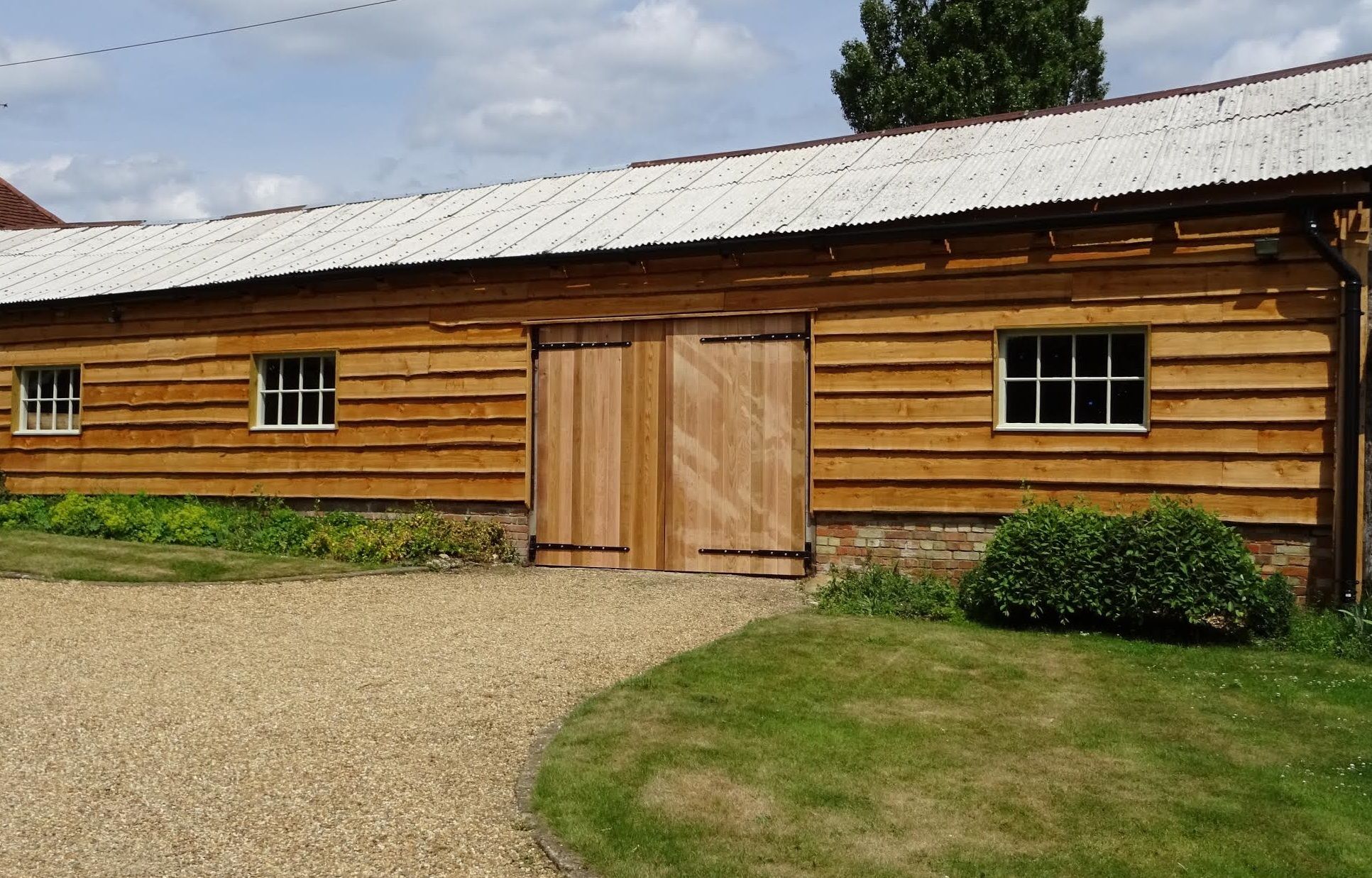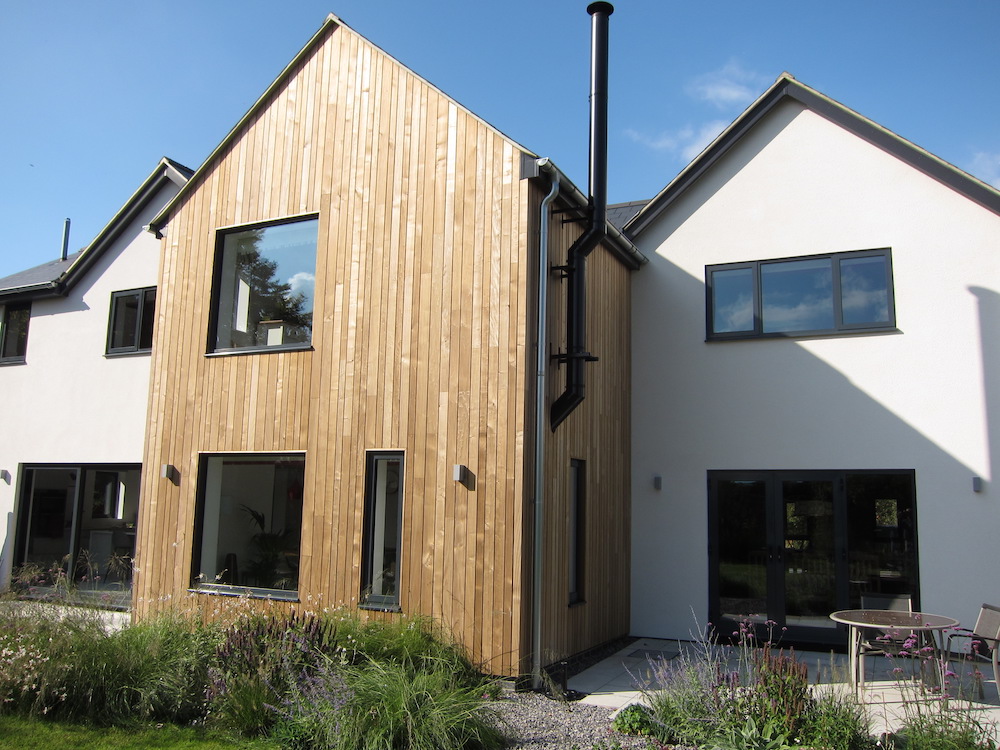Timber cladding: which wood is best?
Timber cladding: which wood is best?
Timber cladding is increasingly popular but choosing the right type of wood is often the hardest decision.
Timber cladding can work for both contemporary and traditional styles. It is extremely versatile and there is a wide range of timber species to choose from, each with its own characteristics. It’s important to understand how the different types of wood look and perform before making your decision. If you are using an architect, they can help you make the right choice for your building design and budget.
Oak timber cladding
Oak is a great option if you want to invest in a hard wood cladding for your home. Beautiful, tough and naturally durable, oak is a traditional choice for external cladding. Most oak timbers, if left untreated will develop a silvery, grey patina over time.
Oak is a relatively unstable wood species. This means oak board will shrink and expand throughout the year and may even split a bit. The boards can be supplied air or kiln-dried to reduce the moisture content and enhance stability. Alternatively, green oak cladding is cut directly from the log and supplied ‘wet’. Green oak is a relatively cost-effective choice compared to dry oak but will shrink as it dries out.
Oak is a premium product requiring zero maintenance, so expect to pay more than for softwood options.
Oak cladding, feather edge
Sweet Chestnut
Attractive, durable and relatively lightweight compared to other hardwoods, sweet chestnut is well worth considering. It grows throughout Britain and the rest of Europe but has been side-lined by our love of oak. Sweet chestnut is very stable, so less prone to movement or splitting although not as tough as oak.
Sweet chestnut has a similar golden-brown/biscuit colour as oak but with a stronger grain and occasional dark mineral streaks. The timber ages to silver grey if left untreated.
Tom Barnes, managing director of Vastern Timber, said: “Oak and sweet chestnut are traditional hardwood cladding timbers that have stood the test of time. Being durable and beautiful, oak has always been a firm favourite for external cladding and it has an enduring appeal and robust character. But sweet chestnut is in some ways superior to oak; it can be more stable, it’s lighter weight and the colour is more consistent.
“For cladding, toughness isn’t the most important feature. Stability, durability and consistency are important.”
Oak, sweet chestnut and western red cedar all contain high tannin levels. Tannin is what makes the timber naturally resistant to insects. Due to its acidic nature, tannin tends to corrode ferrous metals. Barnes said: “Possibly the worst, most common error is using corrodible fixings, which can lead to rusty nail marks, so please use stainless steel!” After the cladding has been installed, tannins may exude from the boards, leaving dark marks.
Prices for British sweet chestnut cladding and oak are similar.
Western Red Cedar
Visually striking and naturally resistant to decay, western red cedar is a popular choice for exterior cladding. Cedar is the most stable of the softwoods. If left untreated, the cladding boards should stay straight and last for many decades. But if a surface treatment is required, such as painting or staining, the stability and low resin content in the wood makes it a good choice.
On the downside, cedar is comparatively low in density, so it can be dented. In the past, cedar was mostly imported. Today options include cladding boards from British grown cedar. British cedar is more knotty than Canadian varieties, but it is also significantly cheaper.
Larch cladding
For a softwood cladding, larch is an increasingly popular choice and considerably cheaper than cedar. It is also denser, making it more resilient to knocks. Larch cladding can be suitable for external use without coatings or treatments and will weather to an attractive silvery grey over time. If you want a specific look, larch usually takes paint and stained finishes well but always check with your supplier.
On the downside, larch is less stable than cedar, so some shrinkage throughout the year is likely. That said, options include larch wood cladding that has been professionally kiln-dried to ensure it is seasoned evenly.
British larch cladding is usually cheaper than European larch. The higher grades tend to have fewer knots. Slow-growing Siberian larch is one of the hardest wearing and most durable softwoods in the world.
Larch can be a wallet-friendly option. However, expect to pay more for higher grades and Siberian larch.
 Rustic Larch, waney edge cladding. Image supplied by Vastern Timber
Rustic Larch, waney edge cladding. Image supplied by Vastern Timber
Modified timber cladding
To provide even further choice, there are also modified timber boards available, typically heat or chemically treated. Thermowood, as the name suggests, is heat treated pine while Brimstone is made from thermally modified British grown ash, sycamore and poplar.
Thermal modification is a non-toxic process that involves heating timber in controlled conditions to remove moisture. This results in a more stable product that won’t warp. Durability and rot resistance are also enhanced. Thermally modified wood is generally a rick, dark brown. The chocolate colour can be maintained with the right finishing or left to weather naturally to a grey shade.
Chemically modified timber products, meanwhile, include Kebony and Accoya
Barnes said: “Modified timbers offer a great alternative to tropical hardwoods and many people choose a locally-grown, thermally modified timber for its environmental credentials. Modified timbers have their own characteristics, for example, Brimstone (produced by Vastern Timber) is lightweight and durable but can be brittle so requires a little more care during installation.”

Brimstone Poplar timber cladding. Image supplied by Vastern Timber
Modified timber cladding prices vary. See individual suppliers.
Aesthetics
When cladding a home extension, the main concern for many people is how it will look. A good starting point is deciding whether you want to achieve a traditional or contemporary design. Species that are naturally relatively knot free, like Canadian western red cedar or Brimstone, work well if you’re aiming for a modern look whereas for something more rustic, knottier species are popular choices, such as oak, British (sawn) larch or British western red cedar.
Planks with a smooth, machine finish will create a clean, crisp appearance as opposed to rougher sawn finishes. For more contemporary cladding, consider a sleeker profile, such as tongue and groove or halflap. Rustic profiles include waney-edge and feather-edge sawn board. Dry wood can be machined to smooth profiles whereas wet wood is supplied in rough sawn profiles.
Fixings
Will you be happy to see the nail heads in the boards? This may seem like a minor issue but can make a major difference to the final appearance. While there is no better installation method than nailing boards directly through the face, it can make the timber cladding appear a bit rough and ready. If you prefer not to see the nail ends, some species can have hidden fixings, including Canadian cedar, sweet chestnut and British chestnut. To use hidden fixings, you will need to select a suitable tongue and groove profile. “Our fixings guide shows different techniques that can be used to hide the nail heads for certain types of cladding,” said Barnes.
Budget
Prices for timber cladding vary hugely depending on the wood and grade you choose. Remember this is the material that will define the overall look of your building as well as protect it from the elements. It needs to be higher quality to do this while weathering well.
At the cheapest end of the market is basic softwood boarding. However, if left untreated it will quickly deteriorate. Treatment adds to the cost of your cladding, so it may not be such a cost-effective option in the long term. Premium priced products include oak, British sweet chestnut, Grade A British Larch, Grade A Siberian Larch Cedar and Canadian Cedar.
More affordable options include Grade B British Larch, Grade B Siberian Larch, British Cedar and British Larch.
When it comes to wood cladding, aesthetics, low maintenance, durability, stability and consistency are important as well as cost. Choose the timber to achieve the look and performance you want. Vastern Timber has developed a helpful guide which can help you find the right species of timber for your project. See Vastern.co.uk/cladding. Barnes said: “Timber cladding works wonderfully in most settings but it’s not the right choice for a very damp or dark position.”
